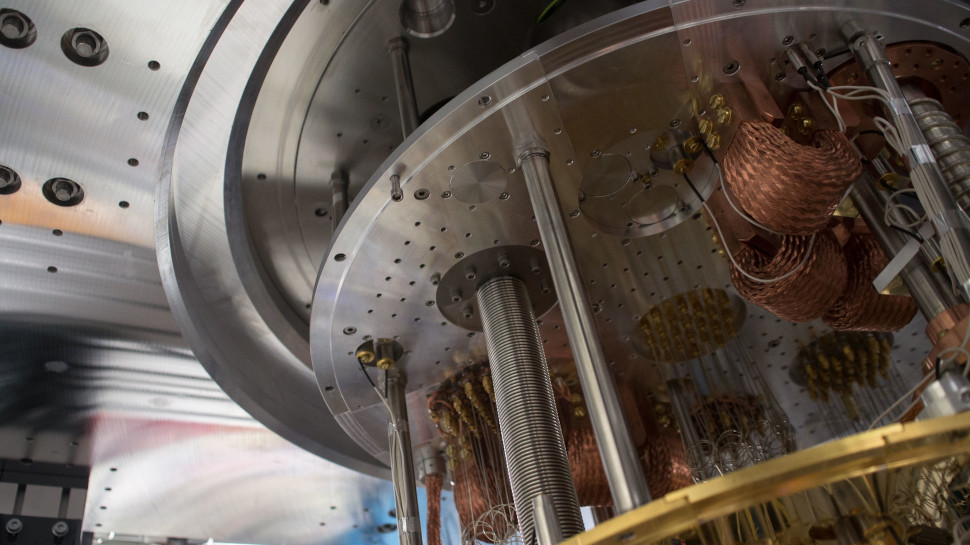Scientists say they've debunked Google’s quantum supremacy claims once and for all
New paper shows traditional hardware can match the performance of Google’s quantum computer

A team of scientists in China claim to have replicated the performance of Google’s Sycamore quantum computer using traditional hardware, thereby undermining the suggestion the company has achieved quantum supremacy.
As reported by Science magazine, the scientists used a system comprised of 512 GPUs to complete the same calculation developed by Google to demonstrate it had passed the quantum supremacy milestone back in 2019.
The endeavor was led by statistical physicist Pan Zhang, who said his team’s supercomputer performed the calculation 10 billion times faster than Google had thought possible.
Quest for quantum supremacy
Quantum supremacy (or quantum advantage) can be defined as the point at which quantum computers can outstrip the maximum potential performance of classical supercomputers in a particular discipline.
Three years ago, Google announced it had achieved this feat with Sycamore, which it said took just 200 seconds to complete a statistical mathematics problem that would take a supercomputer 10,000 years to solve.
The problem was architected in such a way as to accentuate both the attributes of quantum computers, which exploit a phenomenon known as superposition to speed up calculations, and the limitations of traditional systems.

However, the claim was treated with suspicion by industry players from the beginning. The loudest critic was IBM, which claimed its Summit supercomputer would be capable of solving the same puzzle in two and a half days, given enough time to perfect the implementation. And now, a paper published by Zhang and his colleagues has cast further doubt over Google’s claims.
Are you a pro? Subscribe to our newsletter
Sign up to the TechRadar Pro newsletter to get all the top news, opinion, features and guidance your business needs to succeed!
As explained by Science, to replicate the performance of Sycamore, the scientists first had to reconfigure the problem as a 3D mathematical array called a tensor network. This meant they could use the system’s GPUs to perform calculations in parallel.
The low level of accuracy of Sycamore’s computation gave the Chinese team additional room for manoeuvre. By minimizing the accuracy target, they were able to accelerate the calculation by hundreds of times, replicating the same level of performance the quantum machine had achieved.
Where next?
Although it appears Google may have been hasty in its celebrations, it is expected that the quantum supremacy milestone will fall sooner rather than later by virtue of the level of investment going into R&D activity in the space.
A lot of work is going into improving performance by increasing the number of qubits on a quantum processor, but researchers are also investigating opportunities related to qubit design, the pairing of quantum and classical computers, new refrigeration techniques and more.
Recently, IBM also suggested that focusing investment on error mitigation might bear significant fruit at this stage in the development of quantum systems, paving a route towards quantum supremacy. The ability to quiet certain sources of error will allow for increasingly complex quantum workloads to be executed with reliable results, the company says.
“At IBM Quantum, we plan to continue developing our hardware and software with this path in mind,” wrote the firm in a blog post.
“At the same time, together with our partners and the growing quantum community, we will continue expanding the list of problems that we can map to quantum circuits and develop better ways of comparing quantum circuit approaches to traditional classical methods to determine if a problem can demonstrate quantum advantage. We fully expect that this continuous path that we have outlined will bring us practical quantum computing.”
- The advance of quantum computers will require whole load of the best encryption technologies
Via Science

Joel Khalili is the News and Features Editor at TechRadar Pro, covering cybersecurity, data privacy, cloud, AI, blockchain, internet infrastructure, 5G, data storage and computing. He's responsible for curating our news content, as well as commissioning and producing features on the technologies that are transforming the way the world does business.